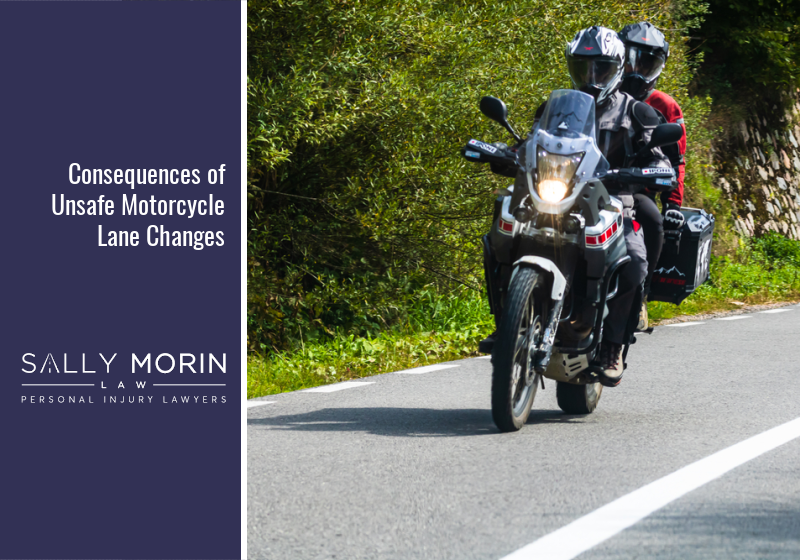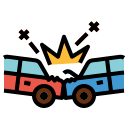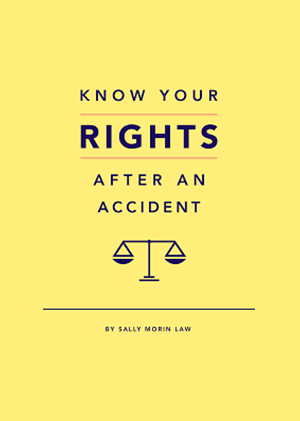Consequences of Unsafe Motorcycle Lane Changes
An unsafe lane change happens any time a driver shifts from one lane to another without taking proper precautions. It’s not just a bad idea; it’s illegal!
California law is clear about what constitutes an unsafe lane change for a motorcyclist or any other motorist. Drivers may only change lanes when it’s safe to do so and after signaling their lane change for others to see.
Here’s what Chapter 6 of the California Vehicle Code says:
No person shall turn a vehicle from a direct course or move right or left upon a roadway until such movement can be made with reasonable safety and then only after the giving of an appropriate signal in the manner provided in this chapter in the event any other vehicle may be affected by the movement.
Still, drivers in Los Angeles, San Francisco, and across California make unsafe lane changes regularly. This dangerous behavior puts everyone on the road at risk and contributes to thousands of traffic injuries, including more than 200 deaths in Los Angeles every year.
Why Motorcyclists Make Unsafe Lane Changes
Motorcyclists have a reputation for frequently making unsafe lane changes, whether this reputation is deserved or not. Some motorcyclists also have a habit of lane splitting, which means sharing the lane with other vehicles to advance in traffic.
California is the only state that permits lane splitting but state law is confusing and unclear on this topic. Sharing the lane is technically legal in some situations. However, it’s never legal to create a dangerous situation for other drivers, and motorcyclists must travel in a “safe and prudent” way.
Speeding often complicates the issue and goes hand-in-hand with unsafe lane changes. Motorcyclists race past other vehicles and weave through traffic at high speeds, which is extremely risky. Nearly one in three road deaths involves speeding.
Causes and Consequences of Unsafe Motorcycle Lane Changes
At Sally Morin Personal Injury Lawyers, we see the results of unsafe lane changes firsthand in our clients’ injury lawsuits and insurance claims. Below are some of the most common situations we encounter involving motorcyclists and unsafe lane changes.
Common Causes of Lane Change Accidents:
- A motorcyclist or motorist fails to signal before changing lanes
- Someone is speeding too fast to make a safe lane change
- There’s a failure to check mirrors and blind spots
- A motorcyclist is drifting or swerving in the lane
- Unsafe lane splitting
- Someone crosses multiple lanes at once
- Misunderstandings and impatience during merges
- Drowsy, drunk, drugged, and distracted driving
When these situations happen, the result can be severe injury or even death. Our legal office has handled personal injury and wrongful death cases involving motorcyclists, motorists, and unsafe lane changes of many kinds. Here are some common injuries in these cases:
Common Injuries Arising From Unsafe Lane Changes:
- Broken bones, especially leg, arm, pelvic, and back injuries in motorcyclists
- Head injuries and traumatic brain injuries (TBIs)
- Injuries that lead to foot, leg, hand, and arm amputations
- Cuts, abrasions, and lacerations including severe road rash
- Spinal cord damage
- Whiplash and neck injuries
If you’re in an accident due to an unsafe lane change, here’s the best thing you can do next: Contact the team at Sally Morin Personal Injury Lawyers for a free initial consultation about what happened and what your options are.
We have a long track record of securing injury compensation for injured motorcyclists and other motorists who have been in lane-change accidents. We’ll approach your case with compassion, sympathy, and the legal expertise it takes to pursue a successful outcome!
We Handle Your Personal Injury Claim So You Can Focus on Your Life
After an injury, contact the attorneys at Sally Morin Personal Injury Lawyers. We handle many areas of the law, including unsafe lane change motorcycle accidents. We believe you should be able to focus on recovering while we handle the legal details.
We truly care about the people of California. Contact us today for a free online case evaluation.











